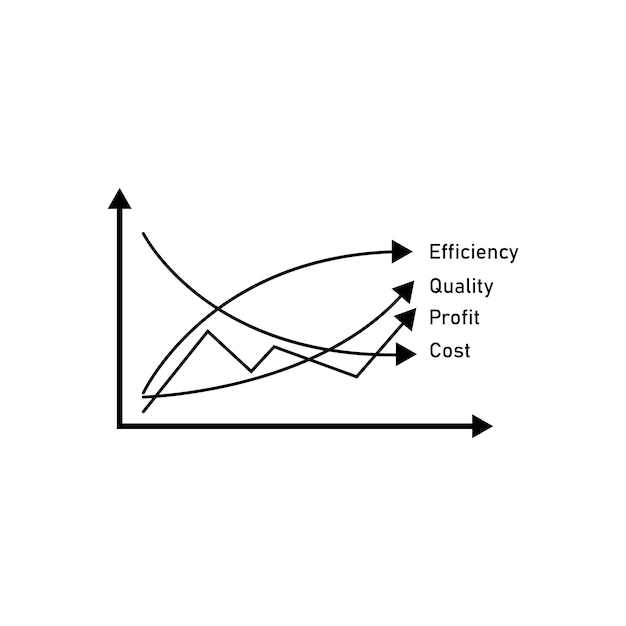Bootstrapping vs. Venture Capital: Choosing the Right Funding for Your US Startup

Bootstrapping vs. Venture Capital: Which Funding Strategy is Right for Your US Startup? This decision hinges on your startup’s growth ambitions, risk tolerance, and control preferences. Bootstrapping offers independence and organic growth, while venture capital provides significant capital for rapid expansion, but it also means relinquishing some control.
Starting a business in the US requires careful financial planning, and one of the most critical decisions is how to fund that venture. Founders often face the dilemma of bootstrapping vs. venture capital: Which funding strategy is right for your US startup? Both options have distinct advantages and disadvantages, shaping the trajectory of a company’s growth and its ultimate success.
This comprehensive guide explores the nuances of bootstrapping and venture capital, helping US-based startups make informed choices aligned with their unique goals and circumstances. Understanding these differences is key to building a sustainable and thriving business.
Bootstrapping vs. Venture Capital: An Overview for US Startups
Deciding between bootstrapping and venture capital significantly influences a startup’s development. Understanding the fundamentals of each strategy is crucial for making an informed decision. Let’s delve into what each entails.
What is Bootstrapping?
Bootstrapping involves using personal savings, revenue, and other internal resources to fund the business. It emphasizes self-reliance and controlled growth.
What is Venture Capital?
Venture capital (VC) involves securing investments from firms or individuals who provide capital in exchange for equity. This typically supports rapid scaling and market expansion.
- Bootstrapping allows founders to retain full control and ownership.
- Venture capital offers significant capital infusions but requires sharing ownership and decision-making.
- Choosing between bootstrapping vs. venture capital: Which funding strategy is right for your US startup? depends on the startup’s vision and risk appetite.
For US startups, this initial funding decision is pivotal. It determines the pace of growth, the level of control retained by the founders, and the overall strategic direction of the company. Ultimately, bootstrapping vs. venture capital: Which funding strategy is right for your US startup? is a question every founder must answer early on.

Key Differences Between Bootstrapping and Venture Capital
The divergence between bootstrapping and venture capital extends beyond mere funding sources. These strategies impact financial structure, operational control, and strategic flexibility.
Financial Implications
Bootstrapped companies often maintain leaner budgets and focus on profitability from early stages. VC-backed companies can invest heavily in growth and marketing.
Control and Ownership
Bootstrapping allows founders to retain complete control over their company’s direction. VC funding usually entails giving up a significant portion of equity and control.
- Bootstrapping leads to organic growth, reducing dependence on external pressures.
- Venture capital might accelerate growth but introduces external expectations and pressures.
- The decision of bootstrapping vs. venture capital: Which funding strategy is right for your US startup? should align with the founder’s vision for control.
Understanding these core differences ensures US startups clearly understand the trade-offs involved. Selecting between bootstrapping vs. venture capital: Which funding strategy is right for your US startup? often reflects the founder’s comfort level with risk and long-term strategic goals.
Advantages of Bootstrapping for US Startups
Bootstrapping provides unique benefits, particularly for startups prioritizing autonomy, flexibility, and sustainable growth. Let’s examine these advantages more closely.
Full Control and Autonomy
Founders maintain complete decision-making power, free from the influence of external investors. This is a major boon for companies that value independence.
Financial Discipline
Bootstrapped companies emphasize careful financial management, fostering a culture of efficiency and frugality.
- Bootstrapping encourages resourcefulness and innovation with limited resources.
- It aligns the team’s focus on generating revenue and achieving profitability quickly.
- For many US startups, bootstrapping fosters long-term resilience and stability.
Startups opting for bootstrapping often enjoy a stronger alignment between their mission and operations. Bootstrapping vs. venture capital: Which funding strategy is right for your US startup?, when answered in favor of the former, creates a company culture that values sustainability and customer satisfaction over hyper-growth.
Disadvantages of Bootstrapping for US Startups
While bootstrapping has several advantages, it also presents notable challenges, especially related to resource limitations and slow growth potential.
Limited Resources and Capital
Bootstrapped companies may struggle to invest in critical areas such as marketing, technology upgrades, or personnel expansion.
Slower Growth
Organic growth can be significantly slower compared to the rapid scaling that VC funding enables.
These limitations mean that bootstrapped startups might miss market opportunities or struggle to compete with VC-backed rivals. For some US startups, these drawbacks may be too significant to ignore. Determining the optimal path involves weighing the benefits and costs when considering bootstrapping vs. venture capital: Which funding strategy is right for your US startup?
Advantages of Venture Capital for US Startups
Venture capital can provide startups with the fuel needed for rapid growth and market dominance. Understanding these benefits helps founders evaluate if this path is right for them.
Access to Significant Capital
VC funding provides startups with the financial resources necessary for aggressive expansion, product development, and market penetration.
Expertise and Network
VC firms often bring valuable expertise, mentorship, and an extensive network of industry contacts.
Faster Scaling
VC funding enables startups to scale operations quickly, capturing market share and building brand recognition.
For many ambitious US startups, the infusion of capital and strategic guidance offered by venture capital is invaluable. The decision to seek VC funding can be transformative, enabling companies to grow exponentially and achieve significant milestones faster than if they relied solely on bootstrapping. The pivotal question remains: Bootstrapping vs. venture capital: Which funding strategy is right for your US startup? This is a critical consideration for any startup founder.

Disadvantages of Venture Capital for US Startups
While venture capital offers significant benefits, it also comes with potential drawbacks that founders need to carefully consider before seeking funding.
Loss of Control
Accepting VC funding often means relinquishing a portion of control and ownership to investors.
Pressure for Rapid Growth
VC firms typically expect a high return on their investment, which can create pressure for quick, often unsustainable, growth.
The pressures and potential conflicts that arise from VC funding can sometimes derail a startup’s original vision. For some founders, maintaining complete autonomy is more valuable than rapid growth. Therefore, understanding these tradeoffs is essential when considering bootstrapping vs. venture capital: Which funding strategy is right for your US startup?
| Key Aspect | Brief Description |
|---|---|
| 🚀 Growth | Bootstrapping: Slower, organic. VC: Faster, aggressive scaling. |
| 💰 Capital | Bootstrapping: Limited to self-funding. VC: Large capital injections. |
| 🔒 Control | Bootstrapping: Full founder control. VC: Shared with investors. |
| 🎯 Risk | Bootstrapping: Lower financial risk. VC: Higher risk, higher reward. |
Frequently Asked Questions
Bootstrapping provides full control, encourages financial discipline, and aligns the company’s mission with its operations. This method fosters a sustainable approach to growth.
The risks include limited capital, slower growth, and potential inability to scale quickly enough to capture market share, leading to missed opportunities.
VC funding offers access to significant capital, expertise, and an extensive network, enabling faster scaling, product development, and market penetration for bootstrapping vs. venture capital: Which funding strategy is right for your US startup?.
Drawbacks include loss of control, pressure for rapid growth, and potential conflicts with investors, which may divert the company from its original vision.
Assess your growth ambitions, risk tolerance, and desire for control. Align your funding strategy with the long-term goals and values of your company, addressing the core dilemma of bootstrapping vs. venture capital: Which funding strategy is right for your US startup?.
Conclusion
Choosing between bootstrapping and venture capital requires a deep understanding of your startup’s goals, values, and risk tolerance. Both strategies offer paths to success, but they demand different trade-offs related to control, growth, and financial discipline.
Ultimately, the best approach aligns with your vision for the future. Carefully consider the advantages and disadvantages of each, and you’ll be well-positioned to make an informed funding decision that supports long-term success when thinking about bootstrapping vs. venture capital: Which funding strategy is right for your US startup?.





